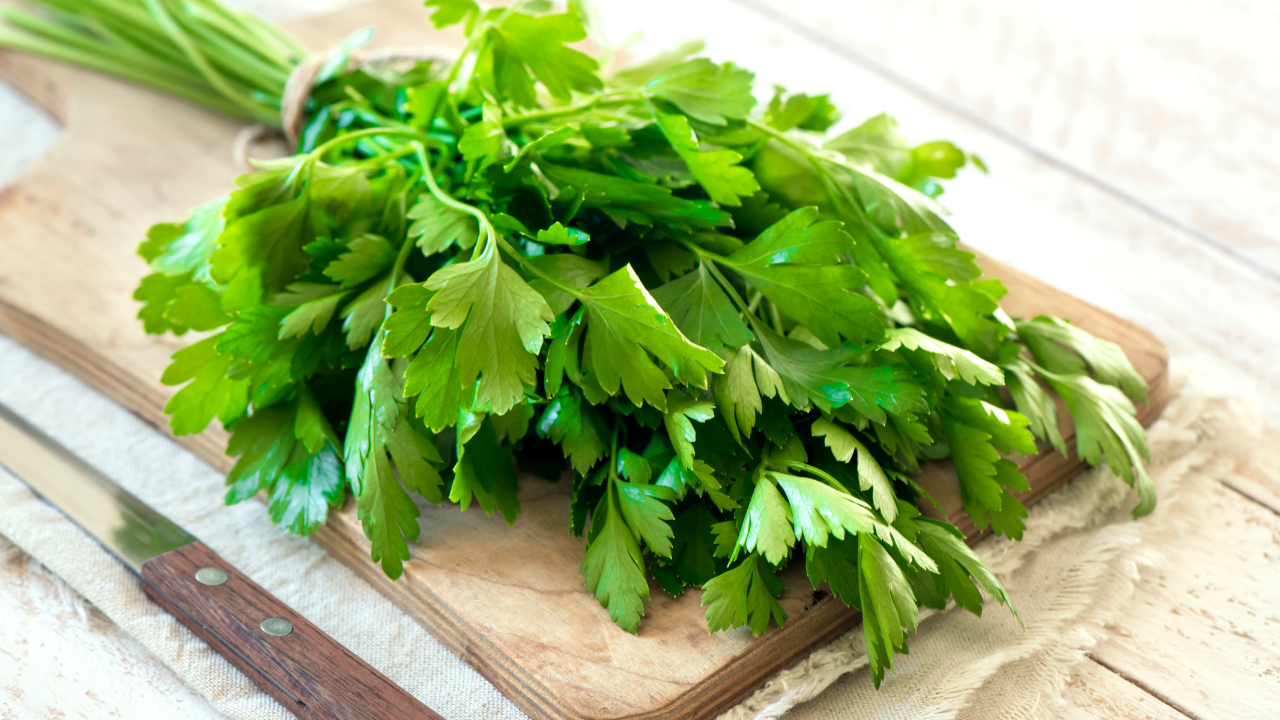Research Highlights:
Main Point 1: Parsley's Flavonoids Combat Arthritis and Inflammation
Main Point 2: Managing Diabetes with Parsley's Myricetin
Main Point 3: Parsley's Anticancer Potential
Scientifically Reviewed by: Holli Ryan, RD, LD/N, in August 2023.
Introduction
Parsley, often relegated to the role of a mere garnish, deserves a prominent place on your plate. This humble herb, native to the Mediterranean, is more than just a decorative touch. It boasts a treasure trove of nutrients and flavonoid compounds, some of which are currently under scientific scrutiny for their potential health benefits. Beyond its culinary appeal, parsley is emerging as a nutritional powerhouse with promising applications against arthritis, inflammation, diabetes, and cancer.
What You Need to Know
Point 1: Combatting Arthritis and Inflammation Several compounds found in parsley, including eugenol, have demonstrated the ability to combat inflammation. This anti-inflammatory property holds the potential to alleviate symptoms of chronic, age-related diseases, such as arthritis. Studies in animal models have shown that eugenol can reverse joint redness and swelling while reducing inflammatory markers.
Point 2: Managing Diabetes with Parsley's Myricetin Diet plays a pivotal role in managing type II diabetes, and parsley can be a valuable ally in this endeavor. Myricetin, a component of parsley, has been found to reduce insulin resistance. Not only does it enhance the body's response to insulin, but it also mimics insulin's action, leading to improved glucose and fat metabolism.
Point 3: Parsley's Anticancer Potential Emerging research suggests that parsley harbors compounds with potential anticancer effects. High-heat grilling of meats can produce cancer-causing chemicals, but parsley has shown the ability to block these harmful compounds, safeguarding DNA integrity. Additionally, compounds like apigenin found in parsley may inhibit the growth of aggressive cancer tumors, even inducing cancer cell death.
Section 1: The Anti-Inflammatory Arsenal of Parsley Parsley's eugenol content has sparked interest for its potential to combat inflammation. Research has revealed its effectiveness in reducing joint inflammation and related symptoms, offering hope for conditions like arthritis.
Subsection 1.1: Efficacy in Arthritis Management Studies in animal models have demonstrated that eugenol, a compound in parsley, can effectively reverse joint redness and swelling, two hallmark symptoms of arthritis. Moreover, it helps reduce inflammatory markers associated with this condition.
Section 2: Parsley's Role in Diabetes Control In the battle against type II diabetes, diet plays a crucial role. Parsley's myricetin content comes into play by reducing insulin resistance, improving the body's response to insulin, and enhancing glucose and fat metabolism.
Section 3: Unveiling Parsley's Anticancer Potential Parsley's potential as an anticancer agent is an emerging area of interest. It exhibits the ability to block cancer-causing compounds produced during high-heat grilling and may also inhibit the growth of aggressive cancer tumors.
Summary
In summary, parsley, often underestimated as a mere garnish, offers a range of health benefits beyond its aesthetic appeal. With its anti-inflammatory properties, potential role in diabetes management, and emerging anticancer potential, parsley is a versatile herb that deserves a central place in your daily diet. Embrace the power of parsley and savor the benefits it brings to your health and well-being.
References:
- Biomed Pharmacother. 2018 Oct;106:1616-23.
- Biol Pharm Bull. 2012;35(10):1818-20.
- Food Science and Human Wellness. 2012;1(1):19-25.
- FASEB J. 2017 Jun;31(6):2603-11.
- J Cell Biochem. 2018 Oct 2.
- Nutrients. 2017 Dec 17;9(12).
- Cell Physiol Biochem. 2018;48(3):1230-44.
- Mutat Res. 2002 Nov 26;521(1-2):57-72.
- Horm Cancer. 2012 Aug;3(4):160-71.










